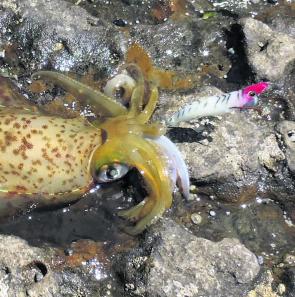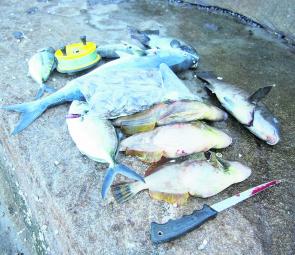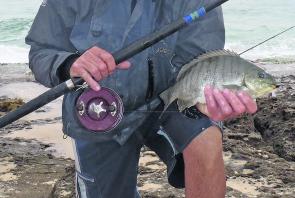May is a changeover month for our region. It’s a time when the beach angler can catch summer whiting, flathead, mulloway and dart one day and then salmon, tailor, bream or trevally the next. And as for the estuary anglers, they could be getting amongst dusky flathead, yellowfin whiting, flounder and bream on surface lures and then a few days later be pulling in luderick, garfish, mullet and trevally.
May is a great month to fish – you just have to make sure that you are on top of what is going on in your local area. And if you are going to venture further afield you will need to carry out a fair bit of research. This could involve reading monthly reports from previous years, talking to your local tackle shop owner or, if you are heading to an area you haven’t visited before, send an email to one of the writers in this magazine. I am sure they would be happy to help you out.
What I have done to prepare myself for the fishing in May is to arrange a number of outfits at the ready. In my garage I have a luderick outfit all rigged up for chasing them off the rocks and in the estuary. Plus for the flathead, bream and trevally I have a couple of rods ready to go with soft plastics and blades, plus one or two ready to take when I go live baiting for them with poddy mullet.
Different kinds of weed and or seagrass beds are found in every one of the estuary systems that I have fished in throughout Australia. They are the vital link in the life of an estuary, and if you have never fished in and around weed and seagrass beds you will be amazed at how much goes on there. Not only are they havens for small baitfish, they also hold larger feeding fish like bream, flathead, whiting, leatherjackets, trevally and luderick.
You can find these weed and seagrass beds on the top or at the edges of sand flats, drop-offs, holes and at the edges of some mangrove systems. Bream, flathead, whiting, luderick and trevally will forage for food over and around the edges of these weed and seagrass beds.
On the southern side of Sydney you will find the Port Hacking. At low tide it has an area where the top of the seagrass beds are floating on the surface of the water, and as the tide rises these seagrass beds become covered with water once again. It is during this time that the bream move out of the deeper water on the fringes of this mass of seagrass beds and start to forage for food. This is the time when you start to work your soft plastics either across the top of the water or just above to tops of the weed bed. Soft stickbaits like the Berkley Bass Minnow (Power Minnow) or Gulp 2” Shrimps that have been fitted onto a 1/40 or 1/28 HWS jighead really come into their own in this situation.
When it comes to Botany Bay, you will find these weed and seagrass beds at places like Towra Point, Yarra Bay, and off Silver and Brighton beaches. There are also plenty up the Cooks River near the ski club, Woronora River from Bonnet Bay to Prince Edward Park and in the Georges Rivers and places like Picnic Point and the Georges River State Park. Try anchoring up near one of these beds and lay out a berley trail so that it goes back over the beds. You can either drift an unweighted bait or suspend a bait under a float back over the weed bed – just remember to keep a steady stream of berley going.
Due to the fact that May seems to be that crossover month from autumn to winter fish species, you will also find leatherjackets, mullet, squid and snapper start to school up in the estuaries and off the rocks.
Once again the weed beds over the flats would be a great place to start chasing mullet, but for the leatherjackets and squid I would start looking for where there is structure like mooring chains, wharves, pontoons, rocky reefs and kelp beds.
The snapper in the estuaries of the Port Hacking, Botany and Bate bays seem to hole up in the deep water and I usually find that the larger soft plastics and blades will do the job.
In last month’s NSWFM Steve Morgan put in a small piece on keeping our wharfs and jetties clean. Time and time again I have gone down to a number of wharves in my area only to find that other anglers have left a mess of fishing line, plastics bags, drink bottles and even fish frames. Both anglers and non-anglers use these places, and we have to keep them clean or our right to fish there could be taken away from us. It doesn’t take much effort to put the rubbish in the bin.
Reads: 1857
I still have that problem of whether to eat the squid or use it as bait. I usually eat the body and use the head for bait.

May is a great time to grab a bag of Hawkesbury River prawns, head down to the rocks after there has been a southerly blow and fish the washes for a feed.

As the water cools, luderick will start to school up off the coast rocks and in the estuaries.




